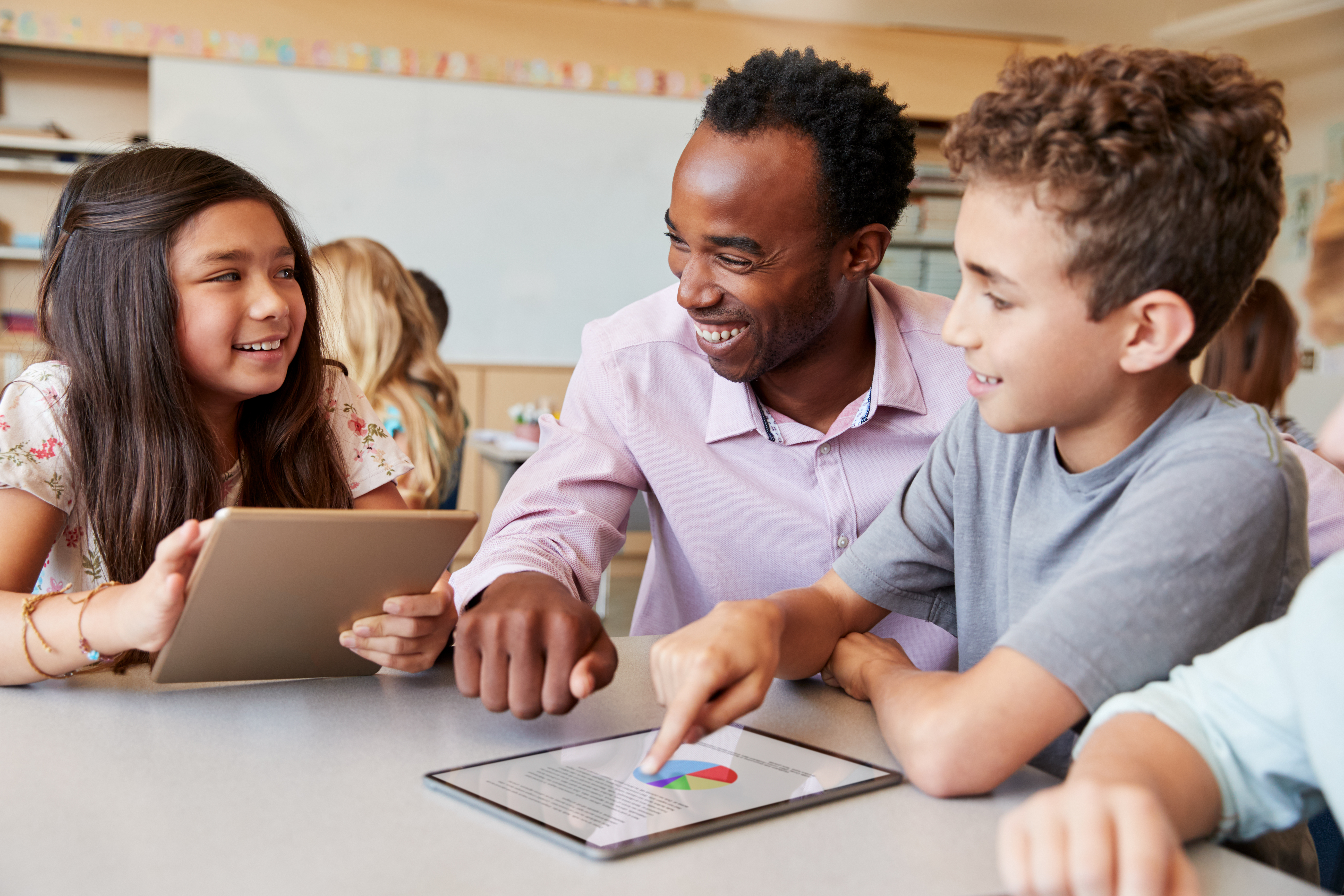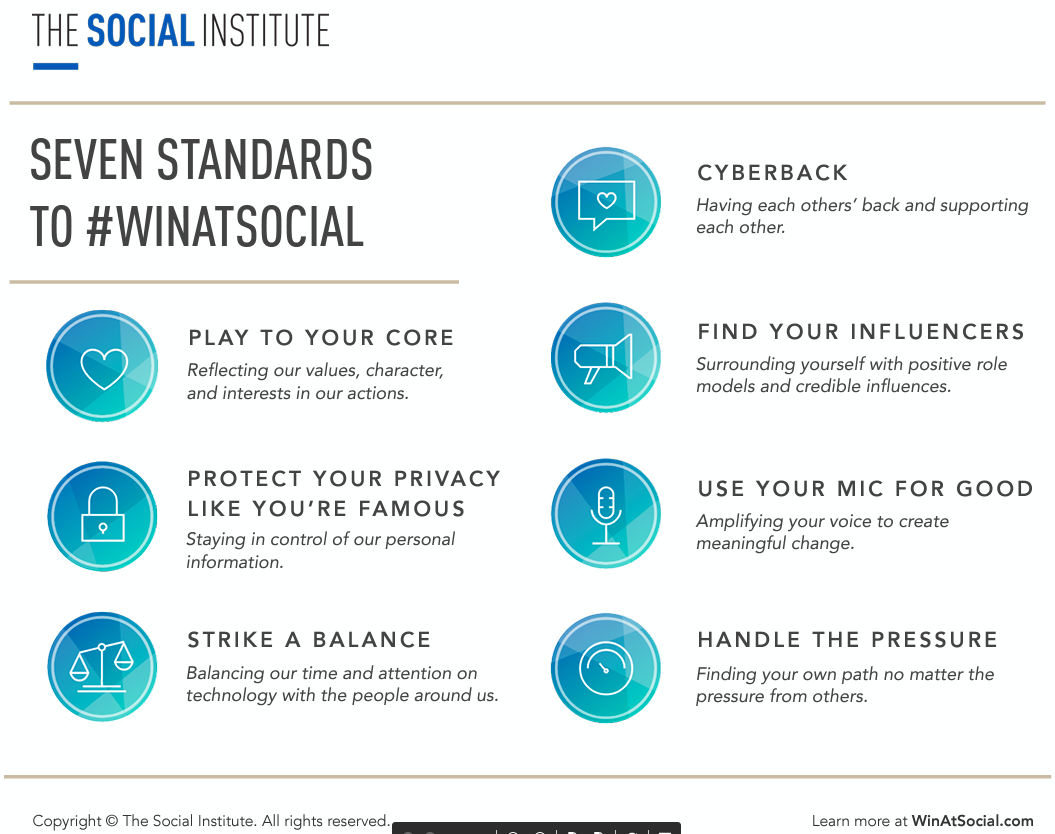Author // Emily Rozmus Monday, 26 September 2022
INFOhio connects Ohio students, educators, and families to licensed digital resources and tools that support teaching and learning. The content available from INFOhio is aligned with Ohio's Learning Standards and can be used to supplement curriculum, empowering students with choice of medium and outcomes. As with any instructional material, adult leadership and modeling is important when using digital resources to ensure students are not only able to master the content, but also navigate the layout and find and use supports for learning.
All too often, adults fall into the thinking pattern that "kids are better at using technology than I am." The term "digital native" can be misleading when talking about the students in our classroom. According to Devorah Heitner in her book Screenwise: Helping Kids Thrive and Survive in Their Digital World, digital natives can also be "digital naives," uninformed about the quality of the information they find or how to use it with fidelity (2).
How can you ensure that your students are savvy at using INFOhio's digital content with confidence to support learning? Here are five approaches that when used together will empower students to learn from and with technology.
Modeling skills and behaviors in the classroom is an excellent way to extend learning to the real world. In A Brief Review of Effective Teaching Practices That Maximize Student Engagement, modeling is explained as demonstrating and describing (Harbour, Evanovich, Sweigart, and Hughes). When educators model a skill, strategy, or behavior, they show the learners explicitly what is expected as well as verbally share the thoughts and decisions needed to reach the desired outcome.
To help students use the digital resources from INFOhio that are appropriate for their grade level, modeling is a best practice. Using a projected screen, educators should show students of all ages how to access the resource and navigate it to find the best content for learning. Just as when learning to brush their teeth, make a sandwich, or drive a car, students benefit from guided practice led by an adult.

As part of any lesson, students benefit from knowing the desired outcome. Before you begin modeling the resource, let learners know what the objectives are—browsing for an eBook, reading an article, searching for a topic—when using INFOhio's digital resources. The following steps will help students use INFOhio's digital resources to support learning:
Modeling the appropriate use of a digital resource is key to students meeting the expected outcome and will lead to their understanding of how to engage with technology both in and out of the classroom.
When adults aren't familiar with a digital resource, they can be insecure and unsure of it and the content it contains. This can lead educators to approach technology use with a negative point of view, and that perspective can be passed on to students through "don'ts".
Richard Culatta, author of Digital for Good: Raising Kids to Thrive in an Online World, notes that, "Most of the books and websites my wife and I turned to seem to be more focused on scaring us with the dangers of technology without providing any useful strategies to help our family learn to use technology in healthy ways." After talking with parents, educators, and technology experts, he noted that most of the discussions adults have with children about technology are negative. Don't give out personal information. Don't click on any strange links. Don't play games for too long.
Using do statements with students can empower and engage them. Paired with modeling, statements like, "Do choose the best eBook for you" or "Do play this vocabulary matching game until you have mastered the words." Allow students to feel confident and to practice good decision-making with others or alone.
Here are some examples of Do statments to use with students when using INFOhio's digital resources:
Focusing on the dos encourages students to use technology for good and develop healthy habits online. Be sure to check out The Social Institute's Seven Standards to Win at Social in the image below as well for examples of do statements.
When children struggle, our first instinct is to help them. Setting students up for success is the nature of an educator's job. But often students need to experience failure to appreciate a win or acknowledge learning has occurred.
Using do statements for technology and digital content presumes we give some freedom to students. With that freedom comes failure. As children grow, empowering them to develop creativity and problem-solving skills includes failing as part of the learning. Ohio's Technology Standards call for learners to:
When an attempt to create is not successful, students should be prepared to meet with peers, discuss the results, and decide what needs to be changed. This is a process most adults in the workplace experience daily, but often in the classroom, failures are often simply that—a botched attempt with 0 points assigned.
What does freedom to fail look like when using INFOhio's digital content? Here are some examples from various grades:

INFOhio's Learning Pathway class Using Technology with Early Learners emphasizes the importance of a network of adults as media mentors who reflect best practices when using technology. "In the 21st Century, children have their own schedules, are increasingly more independent due to mobile technology, and can find the answer to almost any question in just a few minutes. However, the safety and health of children in the 21st Century still rely on the support of a caring and knowledgeable network of adults—parents, family members, teachers, business owners, policymakers, medical providers, librarians, and neighbors who live and work within a community." Several resources are provided in the Using Technology with Early Learners class to help adults work together to create plans applicable to families, schools, and communities.
Teaming up with other adults to support kids is not a new concept, but it might be new when thinking about empowering learners with technology. INFOhio's resources are most effective when teachers, librarians, parents, administrators, and community leaders use them as well, modeling how to research current events and responsibly share information from databases to reflect learning.
Team up with other adults to:
Self-motivated learning is an important outcome of empowering students. As a cultural anthropologist who studies children's relationships to media and communications, Professor Mimi Ito conducted an ethnographic study of over 700 youth. HOMAGO are the "three zones of learning activity that young people engage in when using digital media." HOMAGO means:
Groups such as Youmedia that explore learning spaces believe that HOMAGO is an ideal representation of what programs and agencies, including schools, can grow into as students are increasingly empowered by modeling, technology dos, freedom to fail, and adult support. The image below is a good example of how to empower students with positive and responsible advice.

To help your students HOMAGO using INFOhio
The intentional implementation of technology and practiced use of it by teachers and students will lead to students prepared for a future where digital content and resources are used daily, for work and recreation. Start now to prepare students to be empowered online users.
Emily Rozmus is a Senior Instructional Specialist at INFOhio. She has worked in education for more than 30 years, first as a secondary English teacher and district librarian before starting at INFOhio in 2013. Emily has developed district growth plans, integrated technology, created instruction for information literacy, fostered teacher development, and worked on teams to implement curriculum. At INFOhio, she focuses on training educators to use INFOhio resources to improve learning.
Fetch is avaiable to INFOhio automated schools. If you are an INFOhio school, please log in with your school username/password using the button at the top-left corner of this page.
For more information about Fetch, please visit the Fetch information page or contact INFOhio support at https://support.infohio.org.